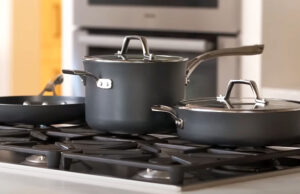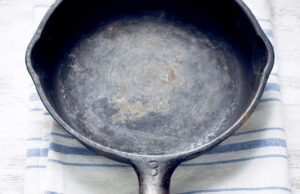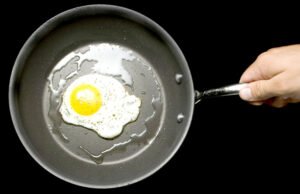As an Amazon Associate, I earn from qualifying purchases at no extra cost to you.
Kenmore Dishwasher Not Draining? Fix It Fast With These Tips
When your Kenmore dishwasher does not drain, it can be very stressful. Dirty water sits inside, dishes stay messy, and the smell grows worse every minute. The good news is that most draining problems are easy to fix at home. In this article, I will show you easy ways to solve this problem fast without confusion or stress.
Check and Clean the Filter
The filter inside your Kenmore dishwasher is the first place to look. Over time, small food bits, grease, and soap can block the filter. When it gets clogged, water cannot move out. This makes dirty water pool at the bottom. Cleaning the filter is simple but often ignored. Many people forget to check it until the water refuses to leave.
To clean it, first switch off your dishwasher for safety. Then remove the bottom rack to reach the filter. Most filters are round and twist out with a gentle turn. Take it out slowly and look inside. You may see food bits or greasy buildup stuck inside. Rinse the filter with warm water and scrub gently with a soft brush.
Once the filter is clean, check the area around it too. Small pieces can slip past and sit under the filter housing. Wipe the space with a cloth or sponge. If grease feels sticky, use warm soapy water. Do not leave even small pieces behind. They can build up again and cause the same problem later.
Put the filter back in place, making sure it locks tightly. If the filter sits loose, dirty water can sneak through and cause blockages again. Then run a quick cycle to see if the water drains better. If it does, you have solved the problem. If not, there are more things to check.
- Remove the bottom rack and reach the filter
- Twist and take the filter out
- Wash it under warm water and scrub gently
- Clean the housing area too
- Put the filter back tight and test the drain
Inspect the Drain Hose
The drain hose is another common reason a Kenmore dishwasher does not drain. The hose moves dirty water from the dishwasher to the sink drain or garbage disposal. If the hose bends or clogs, water gets stuck inside. Many times, the hose just needs a simple check and cleaning.
To start, pull the dishwasher away from the wall if possible. Look at the drain hose at the back. Make sure it is not bent or kinked. Even a small kink can stop water from flowing. If you see bends, straighten them gently. Sometimes this alone solves the draining issue.
If the hose looks fine, then disconnect it carefully. Place a bucket under the hose before removing, because water may spill out. Once removed, check inside for clogs. You can use a thin flexible brush, or even push warm water through to clear the blockage. Many people also use baking soda and vinegar to loosen grease inside the hose.
After cleaning, reconnect the hose tightly. Make sure the connection is sealed so no leaks happen. Also, check that the hose runs in the right loop shape. Most dishwashers need the hose raised in a high loop near the sink to prevent backflow. Without it, water may run back inside.
Once reattached, run a rinse cycle. Watch the sink drain and listen if water flows out smoothly. If yes, then the hose was the issue. If the problem stays, you will need to move on to other checks.
- Check the hose for bends or kinks
- Disconnect carefully and place a bucket under
- Flush out clogs with water or vinegar mix
- Reconnect tightly and set the high loop
- Run a rinse cycle to test flow
Clear the Garbage Disposal
Many people connect their Kenmore dishwasher drain to a garbage disposal. If the disposal is clogged, the dishwasher will not drain either. Sometimes, a new disposal also has a plug inside the drain opening. If this plug is not removed, water cannot pass through. So it is very important to check the disposal.
Start by turning off the power to the disposal. Never put your hand inside while it is on. Use a flashlight to look down the drain opening. If you see food stuck, use tongs or pliers to pull it out. Do not use your hand directly for safety. Cleaning out old food or grease can instantly improve draining.
If your disposal is new, check the knockout plug. This is a small plastic cap inside the drain opening where the dishwasher hose connects. Many people forget to remove it when installing. To remove, disconnect the hose and push out the plug with a screwdriver. Once removed, reconnect the hose tightly.
You can also clean the disposal by running cold water and turning it on. Drop in some ice cubes and a few lemon slices. This clears stuck grease and removes bad smell at the same time. After this, try running your dishwasher again to see if water drains out.
A working disposal keeps the drain path clear. Since the dishwasher and disposal share the same outlet, any block inside will affect both. Cleaning it is a fast way to solve many draining issues.
- Turn off power to the disposal
- Look inside and remove food waste with tongs
- Check if the knockout plug is still in place
- Run ice cubes and lemon for cleaning
- Reattach hose and test the drain
Clean the Air Gap
Some kitchens have an air gap on the sink next to the faucet. This small device prevents dirty sink water from flowing back into the dishwasher. If the air gap gets clogged, water cannot escape and it stays in the bottom of the dishwasher. Many people forget this small part, but it plays a big role.
To check it, find the small cap on the counter near your faucet. Twist it off gently. Under the cap, you will see a small plastic cylinder. Sometimes food bits or grease block this space. Take a brush or even a toothpick to clean out any buildup. Flush it with water to make sure it is clear.
You can also remove the top part of the air gap for a deeper clean. Pull it out and rinse under warm water. Scrub away sticky residue and put it back firmly. If the hoses connected under the counter look dirty, disconnect and clean them too.
After cleaning, run your dishwasher again. If water now drains out, then the air gap was the issue. Keeping it clean prevents water backup and keeps the drain flow smooth. It is a simple task but often solves big problems.
- Remove the air gap cap near faucet
- Check inside for food or grease
- Use a brush or toothpick to clear block
- Rinse and clean the parts with water
- Reattach and test the dishwasher
Test the Drain Pump
If your Kenmore dishwasher still does not drain, the pump may be blocked or broken. The drain pump pushes dirty water out through the hose. When food or glass pieces get stuck inside, the pump stops working. Sometimes, the motor itself can fail and needs a replacement.
To check, unplug the dishwasher for safety. Remove the bottom rack and look near the filter area. The pump is usually close to the filter housing. If you hear a humming sound during drain cycle but no water moves, the pump is likely blocked.
Take out the pump cover if possible and check for items stuck inside. Pieces of glass, food, or even small bones can block the blades. Remove them carefully. If the pump looks clean but still does not work, the motor may be faulty. In that case, you may need a new pump installed.
Replacing a pump is not too hard, but it requires some skill. You need to remove the bottom panel and disconnect wires. If you are not confident, it is better to call a technician. But before spending money, always check for simple blockages first.
After cleaning or replacing, test the dishwasher with a short cycle. If water drains properly, the pump was the issue. A working pump is the heart of the draining system.
- Unplug dishwasher before touching pump
- Remove rack and find pump near filter
- Listen for humming during drain cycle
- Check and remove stuck food or glass
- Replace pump motor if needed
When to Call a Professional
After trying all checks, sometimes the Kenmore dishwasher still does not drain. This can mean a deeper electrical or control board issue. At this point, calling a professional is the smart choice. A technician can test wiring, sensors, and control parts that are not easy to check at home.
If your dishwasher shows error codes, it may point to a control problem. These codes can tell the technician where the fault is. Replacing boards or wiring should only be done by trained people. Doing it yourself can cause damage or safety risks.
It is also best to call for help if you hear grinding noises. This can mean pump failure or broken parts inside. A pro has the right tools to fix or replace these parts safely. They can also check water lines and valves for hidden issues.
While calling a technician costs money, it saves time and avoids bigger damage. If your dishwasher is under warranty, repairs may even be free. Keep your receipts and call the service center to check. In many cases, one visit solves the issue fully.
- Call a technician for electrical or control problems
- Look out for error codes on the panel
- Seek help if you hear strange noises
- Use warranty if your dishwasher is still covered
- Avoid damage by letting experts handle wiring
Final Thoughts
A Kenmore dishwasher not draining may seem like a big headache. But most times, the problem comes from simple clogs or blockages. By checking the filter, hose, disposal, air gap, and pump, you can often fix it yourself. If nothing works, calling a pro is the best choice. With the right steps, your dishwasher will soon drain and clean like new again.
| Problem | What to Do | Tools Needed | Time |
|---|---|---|---|
| Filter clogged | Remove and clean filter | Brush, warm water | 10 min |
| Hose blocked | Disconnect and flush hose | Bucket, vinegar, brush | 20 min |
| Disposal clogged | Clear food and remove plug | Tongs, screwdriver | 15 min |
| Air gap dirty | Clean cap and housing | Toothpick, water | 10 min |
| Pump blocked | Clear or replace pump | Screwdriver, pliers | 30+ min |
| Still not draining | Call technician | Phone, warranty papers | Varies |
Frequently Asked Questions (FAQs)
Is it safe to run my Kenmore dishwasher if water is not draining?
No, it is not safe. If water does not drain, dirty water stays inside and may cause leaks. Running it again can also damage the pump and motor. It may even cause an overflow on your kitchen floor. Always fix the draining issue before starting another cycle. Your dishwasher will last longer if you avoid forcing it to work while blocked.
Can a blocked filter stop my Kenmore dishwasher from draining?
Yes, a blocked filter is one of the most common reasons for draining problems. Food bits, grease, and soap collect on the filter over time. This makes it hard for water to flow out. Cleaning the filter is easy and often solves the problem right away. If you keep it clean regularly, you can avoid most draining issues before they happen.
Do I need tools to clean the drain hose?
You do not need many tools. Usually, a bucket, a small brush, and warm water are enough. Some people also use vinegar and baking soda for grease. If the hose is very clogged, a flexible pipe cleaner can help. Make sure to reconnect the hose tightly after cleaning. Most of the time, you can handle this at home without special tools.
Is it normal for water to sit in the bottom after a cycle?
A small amount of water at the very bottom is normal. It keeps the pump seals from drying out. But if you see a pool of dirty water covering the filter, that is not normal. It means water is not draining properly. In that case, you need to check for clogs or blockages. Normal water is very shallow and clear, not deep or dirty.
Can garbage disposal cause dishwasher draining issues?
Yes, if your dishwasher is connected to the disposal, a clog there can block draining. Food waste or grease inside the disposal keeps water from flowing out. Sometimes, new disposals have a small plug inside that must be removed. If it is left in, your dishwasher will not drain. Cleaning or fixing the disposal often restores normal draining.
Do I need to clean the air gap often?
Yes, it is a good idea. The air gap prevents dirty sink water from flowing back into the dishwasher. If it gets clogged with food or grease, water cannot pass through. Cleaning it once every few months keeps everything working well. It only takes a few minutes and can save you from bigger problems later.
Is it expensive to replace a drain pump?
The cost depends on the model and service. On average, a new drain pump may cost between $75 and $200 for the part. With labor, it may be higher. If your dishwasher is still under warranty, it may be free. While it is a cost, a new pump can extend the life of your dishwasher for many more years.
Do I need a professional if I already tried all fixes?
Yes, if you already cleaned the filter, hose, disposal, air gap, and pump, then the issue may be deeper. Electrical problems or control board faults are not easy to fix at home. A professional has tools to test and replace parts safely. Calling one at this point saves you time and prevents more damage. It is the smart choice.




